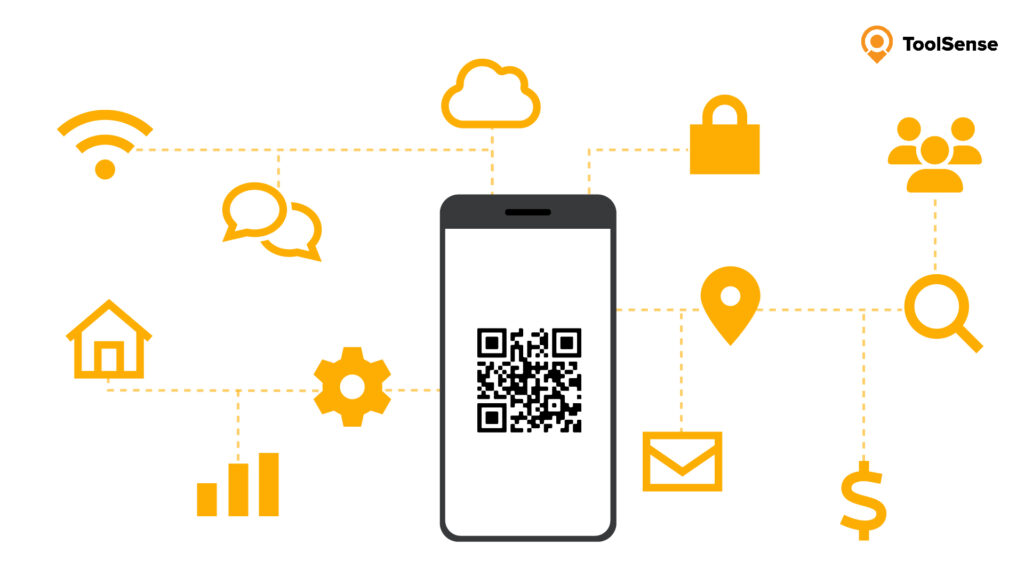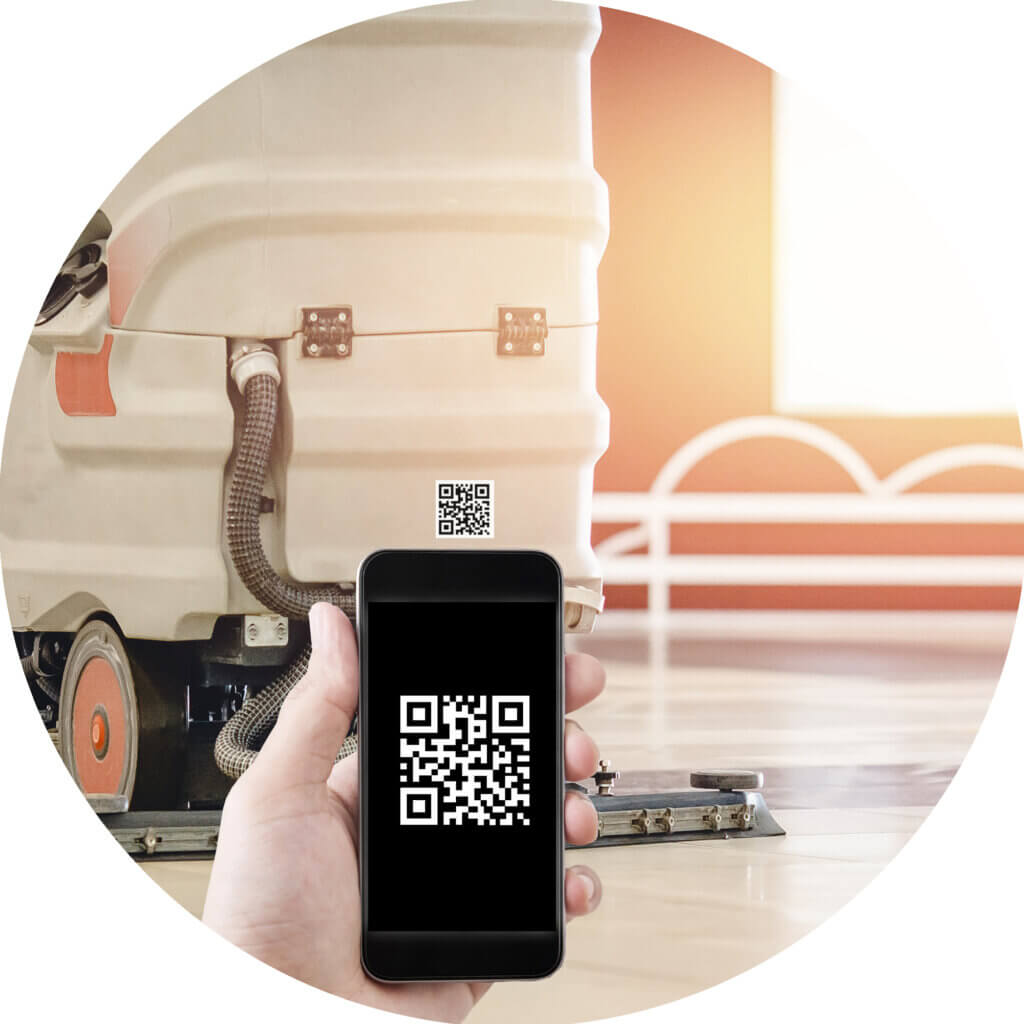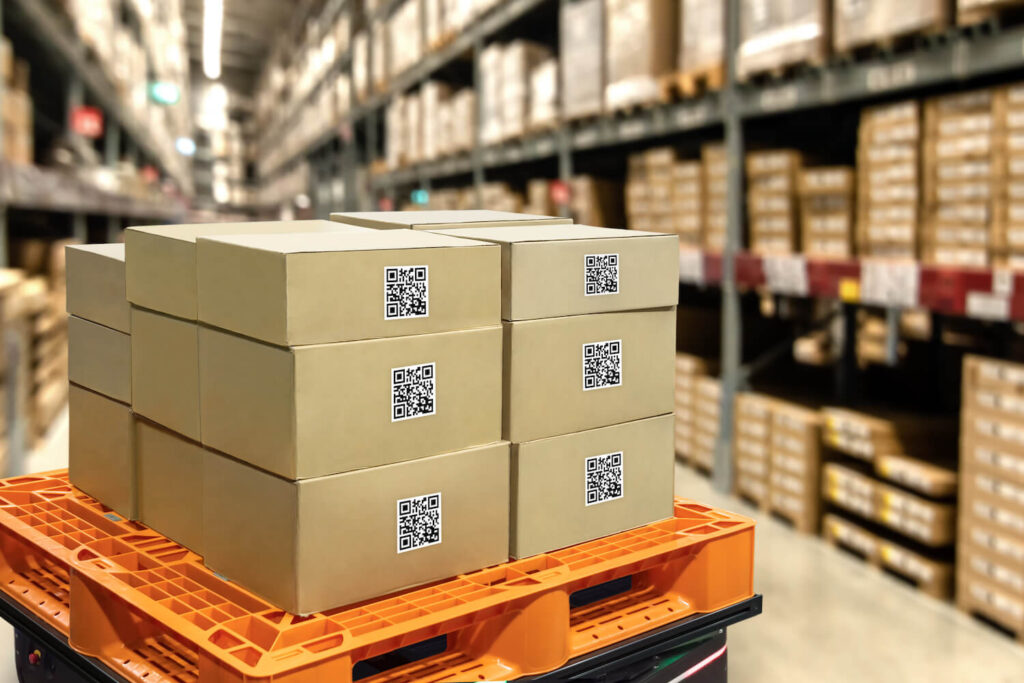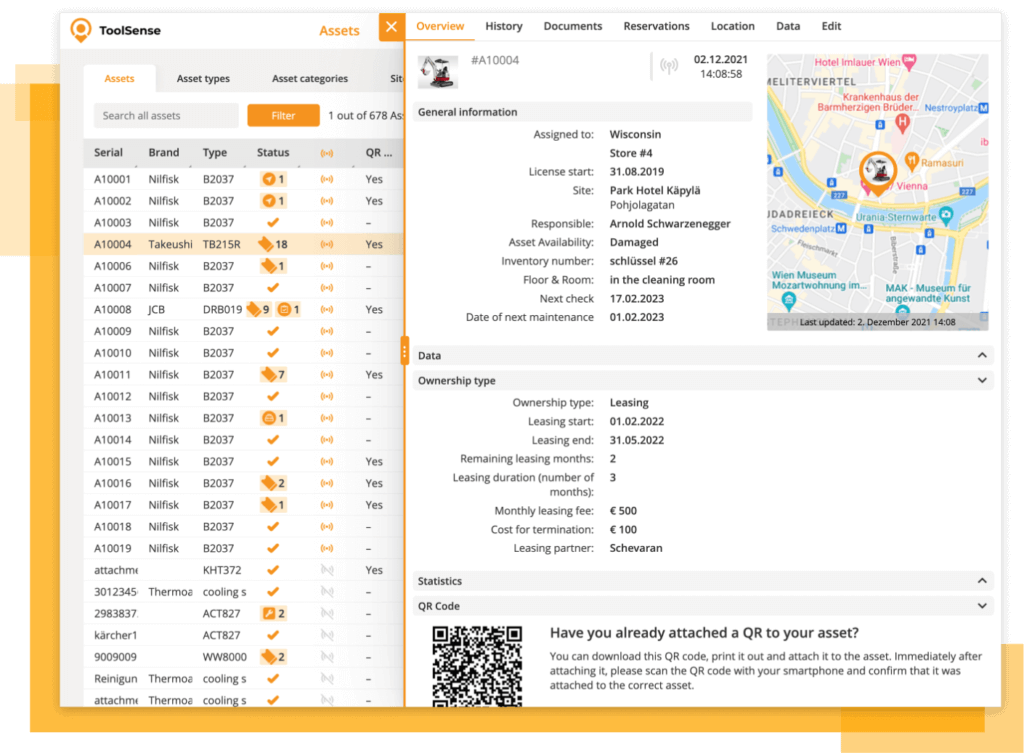QR codes are now a staple in modern inventory management, offering a quick and efficient way to track and access items. They serve as a gateway to instant information, making it easier for businesses to achieve efficient inventory management. When a QR code is scanned, it can reveal essential details about a product, enhancing the inventory management process.
However, these codes are just a tip of the iceberg in the larger framework of a QR code inventory system. This system has revolutionized the way companies manage their inventory, paving the way for better organization and accuracy. It’s vital for businesses to choose a provider who can optimize the QR code inventory system to meet their specific needs, ensuring they reap the full benefits of this modern technology.
What Is a QR Code?
A QR code is an image that can be scanned and read by a variety of scanners. It consists of black squares and dots that translate the code into a specific sequence. Whether it’s product information or a limited-time promotion, the result is something that can be read and easily interpreted by the QR code scanner.

The History of the QR Code
QR codes are an evolutionary product of retail. Retailers have long realized that tremendous growth is a double-edged sword. The more people there are at a given location, the faster staff will have to move to keep up with them. Enter: the cash register. Around the mid-century, these were used in supermarkets and convenience stores to help them keep up with demand.
This would eventually give way to our modern point-of-sale systems designed to accelerate the process even more. However, as handy as barcodes were for scanning, they couldn’t always hold all the information that retailers needed to keep up with inventory traffic. In addition, the positioning of the barcode itself would often lead to scanning issues.
Denso Wave, a Japanese automotive company, was the first brand to use the QR code in the early 1990s as a way to solve the bigger issues that barcodes presented. QR codes not only contain more information than the standard barcode, they could also be scanned from any direction.
Static QR Codes vs Dynamic QR Codes
Static QR codes are dense, and they’re not as scannable. The information can’t be updated once it’s generated, nor does it allow the tracking of data. It can essentially lead someone to a URL and that’s about all. A dynamic QR code isn’t nearly as dense, making them easier to scan. You can also track the data, edit the URL, and adjust the content as needed.
ToolSense is trusted by 700+ companies worldwide



How QR Code Systems Are Used – QR Code Organization System
QR codes are often used in the supply chain. People can see where a product has been and where it’s going. They’re also a frequent choice for in-app and software. People can use them to reduce the amount of time they have to spend in a virtual store before downloading an app. QR codes are also valuable for optimizing various aspects of business operations, such as asset management, equipment maintenance tracking, field data collection, and tracking raw materials and work orders through the manufacturing process using smartphone technology and QR codes. They also can scan them to get access to an advertisement or special promotion.
The appeal of QR codes for mobile applications is that they allow for real-time monitoring of how many scans are made, what devices they come from, and where people are finding the code. (That’s a lot of data to help companies determine how effective their efforts are!)
How Does a QR Code Work?
You can think of QR code stickers like you think of barcodes. The actual data included can be anything from binary to alphanumeric characters. The arrangement of squares and dots allows the image to be scanned, so the scanner can access select information.
QR Code for Inventory: How to Use QR Codes for an Inventory Management System
Modern inventory management systems typically already have the capability to handle QR codes. In other words, all you need to do is generate them. You can easily create QR code stickers or labels, attach different QR codes to products or on product packaging for up-to-the-second tracking.
These QR code stickers for invetory can be as tiny as 1 cm x 1 cm, though many retailers will typically make them at least double the size. No matter how small they are though, they’re not limited in terms of the data they can store. In addition, even if the code isn’t perfectly positioned, it’s sophisticated enough to be read by practically any scanner. You can scan QR codes to add new inventory to the system, search for items, track job site assets, generate work orders, and access vital information on equipment and materials.

Barcodes vs QR Codes for Inventory Management
While barcodes are still a popular choice today, there’s a few big reasons why we’re seeing a shift from this technology to QR codes for inventory management:
- Limited information: Those long barcodes may seem like they’re communicating tons of data, but the truth is they leave a lot out. For retailers who work with a lot of stock, QR codes are rq4 more precise when it comes to how they track each product.
- Scannability: A barcode that’s in an odd place can ultimately give anyone a lot of trouble. If the barcode scanner app can’t translate it, it slows down the whole process (which can ultimately affect sales). QR codes can be scanned whether they’re being viewed from up, down, diagonal, etc. There’s no friction anywhere, which can be extremely helpful for inventory management tracking.

Pros and Cons of Using a QR Code Inventory Management System
The biggest advantage of QR code inventory management is just how much information there is to be gleaned from a simple scan. A standard barcode can store about 25 characters. A QR code, on the other hand, can accommodate numeric characters of more than 100 times as many. From URLs to product details, the amount of information that can be included is truly mind-blowing. By utilizing QR code scanning, businesses can track assets in real-time, managing inventory more efficiently.
The information is also encrypted, which can make for a more secure QR management system. There are three levels of detection built into QR codes, making it easier to catch small mistakes long before they balloon into a bottom-line nightmare.
The major disadvantage of using QR codes is that the code needs to be at least 70% intact. If the sticker or print is torn, smudged, or generated incorrectly, it won’t work at all. If you’re using this inventory management, it makes sense to find a generator that allows for unlimited reprinting of QR codes so you can replace labels in a pinch.
Why QR Codes Are Perfect for Asset and Inventory Management Systems
QR codes are the obvious choice for businesses that need to keep up with a lot of stock as they are also essential for tracking assets in the context of managing work orders, scheduling, and equipment maintenance tracking. Someone running a small store with limited merchandise can probably get away with using barcodes still. However, for anyone who needs more from their tracking system, QR codes are the answer.
- Convenient: Today, employees in warehouses are accustomed to tracking inventory with their smartphones.
- Customizable: QR codes are excellent for any retailer who sells multiple types of products. They can be distinguished based on their categories, which can make them easier to label and organize.
- Resilient: While QR codes can certainly be damaged, they are remarkably durable. Their ability to stand up to wear and tear makes them a reliable choice for any retailer.
- Real-time data: There are few things worse than working with inaccurate data. The assumptions and decisions made can be catastrophic for a company if they don’t have a clear understanding of their inventory patterns. QR codes mean instant updates for the system, so there’s less confusion all around.
Why Use an QR Code Software Like ToolSense?
The biggest reason to use a QR code system like ToolSense is because it’s calibrated precisely for the people who use it. Our products are not only versatile enough to be used in different industries, they’re designed to deliver everything you need and nothing you don’t. Custom mobile forms can be created for various business needs, including asset inspections, equipment service and maintenance, field reports, and quality control.
The best part is that you don’t need to have a Computer Science degree to use our inventory management software. They’re user-friendly and built with security in mind. With us, you can customize your product categories, reprint labels, and track every movement.

ToolSense QR Code Examples of Use
Wondering how the QR code technology can be used in various application examples?
- Asset management: Your assets don’t offer enough space for bulky GPS or Bluetooth trackers? With ToolSense, that’s not necessary. Instead, the software comes with a handy QR code function that automatically assigns a unique code to every asset. Printed out and attached to your machine or equipment, these codes don’t take up any space.
- Work order management: Downtime and unexpected repairs can really cut into a company’s profitability, so it’s best to stay ahead and be aware of any issues or upcoming repairs before they occur. A work order QR management system like ToolSense is perfect for reducing asset downtime. Any issues, spare part and service requests or malfunctions can be reported instantly by just scanning a QR code.
- Maintenance management: With ToolSense, you can assign a unique QR code to each of your assets that doesn’t take up space and can be scanned with a regular smartphone. This creates a ticket where the worker reports an issue and requests spare parts or repairs. This ticket is then forwarded to the responsible employee and can be processed without detours.
ISS Austria
„We wanted to have a solution that does not only track expensive assets but also cheap ones. In Austria, ISS operates over 6,500 cleaning machines alone, without even counting vacuum cleaners and other pieces of equipment. With ToolSense we bring them together on a single platform, leveraging data from IoT hardware and improving maintenance and inspection processes.“

How Can You Create a QR Code System for Inventory Management?
It’s as easy as booking a demo with ToolSense or trying our software 30 Days 100% free.
We’ll show you why it works, how it can be integrated into your systems, and what you can expect as you get everything up and running. Our team is ready to give you a tutorial that can help you decide whether this system is right for you.

Conclusion: Streamline Inventory Management by Using a QR Code Inventory App or Software
When you look at the changes over time, it’s clear that QR codes essentially sped everything up without compromising quality in the work environment. In fact, they streamlined inventory management by providing more information and eliminating many of the hassles of barcodes. Today, employees and customers alike depend on QR codes to keep retail operating at top efficiency.
See How ISS Improved Their Asset Processes With ToolSense
FAQ
Here’s a quick break-down of what you should know:
The best way to generate QR codes is with user-friendly software. ToolSense has the programs you need to allow for better inventory tracking as well as asset tracking.
Not necessarily. If you’re not tracking very many products, it may not be a wise decision. However, if you are working with a lot of stock, you should know that QR codes include more product data than barcodes. The dots and squares of the code contain encrypted information that can tell the scanner everything from the product number to how many of the item is left in stock.
This term refers to any device that can properly scan a QR code. The most common example of this is a smartphone, though it’s not the only technology that can work with these codes.
Inventory management systems will typically use QR codes to track their products. Because barcodes can only display around two dozen characters to the scanner and QR code can display hundreds or even thousands (depending on the format), companies can keep up with demand without sacrificing accuracy.




